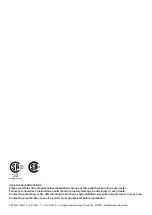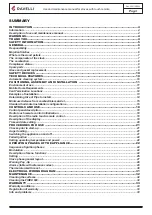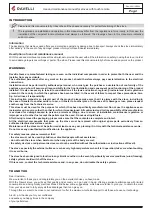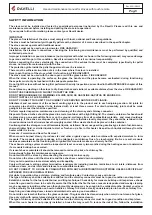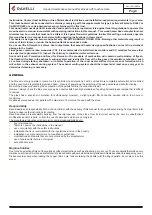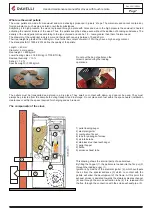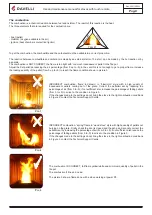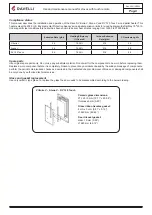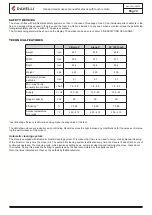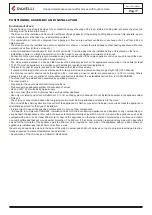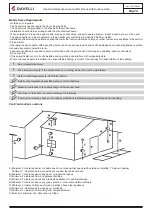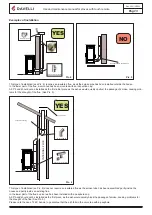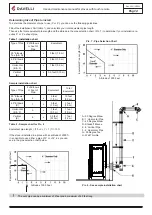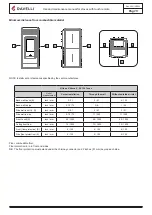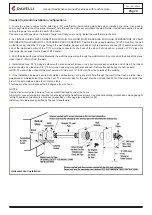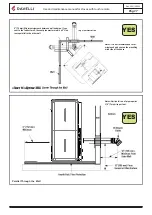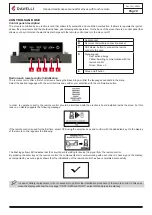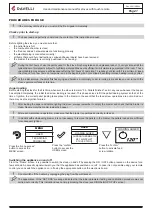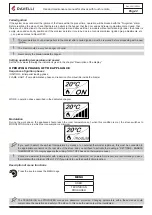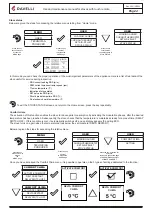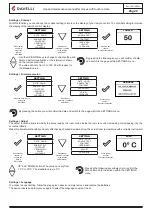
Use and maintenance manual for stoves with touch remote
Pag.11
Rev.0 05/12/2022
POSITIONING, ASSEMBLY AND INSTALLATION
Environment of use
The positioning of the stove is decisive for a successful and equal heating of the room. Before deciding where to place the stove, the
following must be taken into account:
- The stove must be installed on a floor with a sufficient carrying capacity. If the existing building does not meet this requisite, appro-
priate measures must be taken (i.e. load distribution plate).
- The combustion air cannot be obtained from a garage or from an area without ventilation or exchange of air, but from a free or
external space
- The stove must not be installed in a bedroom, bathroom or shower, or where there is already another heating appliance without an
autonomous air flow (chimney, stove etc.)
- A non-combustable Hearth board 6” from front of unit and 6” from the sides must be installed before unit is placed on the floor.
- Installation is better in a large and central room in the house to ensure maximum circulation of the heat;
- Connection to the main supply is recommended using a grounded outlet (if the cable supplied is not long enough to reach the near-
est outlet, use an extension cord with a surge protector);
- The stove must be placed in a position that receives the necessary level of air for appropriate combustion of the pellets (at least
131.23 f
3
/h must be available), in accordance with installation regulation and local legislations;
- All joints for connector pipe is required to be fastened with at least three screws.
- If vented horizontally joint should be siliconed with hi-temp. silicone and screwed so they are gas tight. (RTU 500 silicone)
- the chimney connector shall not pass through an attic or roof space, closet or similar conceald space, or a floor or ceiling. Where
passage through a wal, or partition of combustible construction is desired, the installationshall conform to CAN/CSA-B365.
The stove must be installed and assembled by qualified personnel.
The room must be:
- Prepared for the environmental functioning conditions
- Prepared with an adequate system of evacuation of smoke
- Have a 120V 60 Hz electricity mains supply
- Do not connect this unit to a chimney flue serving another appliance
- Use only UL Listed Type L Vent or Pellet Vent 3” in. I.D. venting system to exhaust. Do not install flue damper in the exhaust system
of this unit.
- The chimney connector and each other adjoining section must be firmly attached and secured to the stove.
- Do not install the chimney directly at the outlet of the appliance. A chimney connector (flue pipe) is required unless the appliance is
specifically approved for that type of installation.
- It is important to use all the specified components, do not use other components.
- “In Canada, to comply with CSA B365, Installation Code for Solid-Fuel-Burning Appliances and Equipment, any combustible cov-
ering beneath the appliance and/or within the area extending horizontally at least 450 mm (18 in) beyond the appliance on any side
equipped with a door, and at least 200 mm (8 in) beyond the appliance on other sides, shall be protected by a continuous, durable,
non-combustible pad that will provide ember protection. The 450 mm (18 in) ember protection required on any side with a door shall
extend for the full width of the appliance plus the 200 mm (8 in) required on each side of the appliance without a door. Where an
appliance is installed less than 200 mm (8 in) from a wall,
the ember pad need only extend to the base of the wall. An ember pad shall not be placed on top of a carpet unless the pad is struc-
turally supported to prevent displacement and distortion”.
- Specification of the chimney as a CAN/ULC-S609 listed.
Summary of Contents for Vittoria V
Page 1: ...USE AND MAINTENANCE MANUAL Stoves with Touch Remote Vittoria V Atena V RV 120 Touch...
Page 34: ......
Page 35: ......


